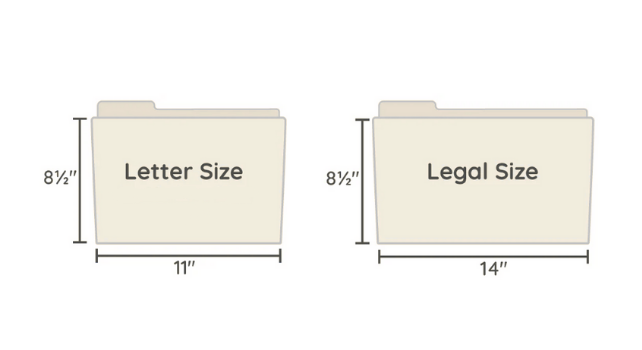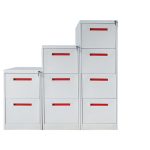When outfitting your office with file storage, one of the first decisions you'll face is whether to choose legal size or letter size file cabinet. This seemingly simple choice can significantly impact your daily operations, storage efficiency, and even compliance with industry standards. Let's break down the key differences to help you make the best decision for your business needs.
Understanding the Basic Differences
The fundamental distinction comes down to dimensions:
- Letter size file cabinet: Designed for standard 8.5" x 11" documents
- Legal size file cabinet: Accommodate larger 8.5" x 14" documents
While this 3-inch difference might seem minor, it has important implications for your office workflow and space utilization.

Physical Dimensions and Space Considerations
Legal size file cabinets are typically:
- 3-4 inches deeper than letter size models
- About 15-20% heavier due to additional materials
- Often require more clearance space for drawer operation
A standard 4-drawer letter size vertical cabinet measures about 18" deep, while its legal size counterpart will be 21-22" deep. This becomes particularly important in space-constrained offices where every inch counts.
Industry-Specific Requirements
Certain industries nearly always require legal size storage:
Legal Practices:
- Court documents
- Contracts
- Deeds
- Pleadings
Healthcare:
- Patient charts
- Medical records
- Insurance forms
Construction/Engineering:
- Blueprints
- Architectural drawings
- Permits
Government:
- Compliance documents
- Tax records
- Regulatory filings
Storage Capacity and Organization
While legal cabinets can technically hold more paper due to their larger dimensions, this doesn't necessarily translate to more efficient storage:
- Letter size file cabinet offers better space utilization for standard documents
- Legal cabinets allow for mixed storage but may waste space for letter-size files
- Lateral file configurations can help maximize space for either size
Cost Comparison and Budget Impact
On average, legal size file cabinets command a 15-25% price premium over comparable letter size models. This price difference stems from:
- Additional materials required for construction
- Lower production volumes
- Specialized manufacturing requirements
For businesses that only occasionally handle legal-size documents, a hybrid approach might be most cost-effective: purchasing mostly letter size cabinets with one or two legal size units for specific needs.
The Hybrid Solution: Best of Both Worlds
Many manufacturers now offer convertible or adjustable file cabinets that can accommodate both sizes:
- Adjustable hanging file frames
- Removable dividers
- Convertible drawer configurations
- Modular systems that mix both sizes
These solutions provide flexibility but may come with compromises in security or durability compared to dedicated units.
Making the Right Choice for Your Business
Consider these key questions:
- What percentage of your documents are legal size vs. letter size?
- Are you in an industry with specific document retention requirements?
- How much physical space can you dedicate to file storage?
- What's your budget for office furniture?
- Are you likely to need more legal-size storage in the future?
Final Verdict
For most general office environments where the majority of documents are standard letter size, letter file cabinets offer the most practical and economical solution. However, businesses in legal, healthcare, engineering, or government fields will likely require legal size cabinets to comply with industry standards and document handling practices.
Remember that your filing needs may evolve over time, so consider purchasing cabinets that can adapt to changing requirements. When in doubt, consult with an office storage specialist who can assess your specific document workflow and space constraints.





